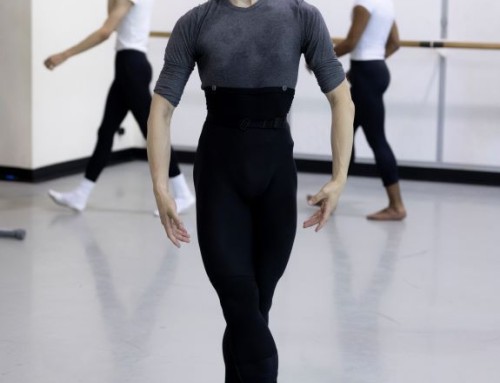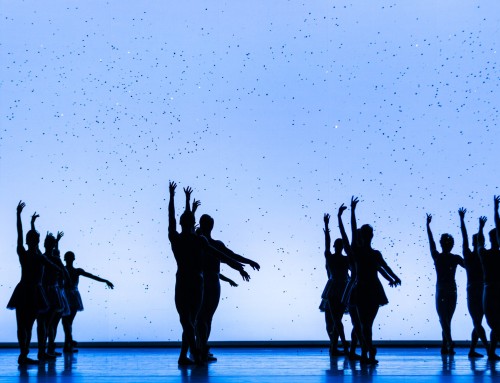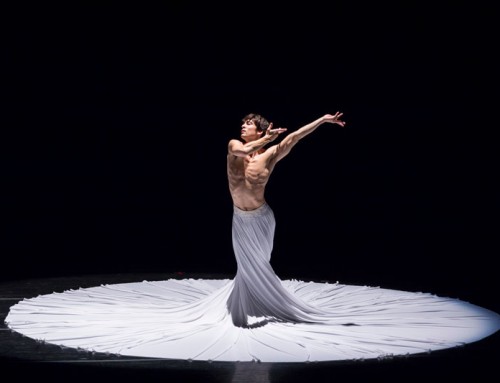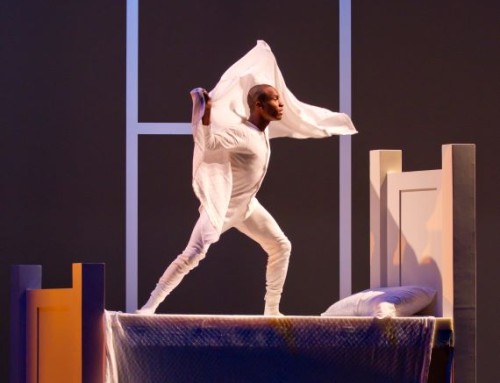I’ll never forget how I felt walking into the studio at the Kennedy Center so many Augusts ago. I was an eager 14 year-old ready to start my three-week summer intensive at Exploring Ballet with Suzanne Farrell (EBSF). For me, this was the chance of a lifetime. I knew that Suzanne only picked about thirty young dancers to participate in the program, and the day my acceptance letter came was one of the happiest days in my young life. I had attended School of American Ballet for four summers prior to attending EBSF, so I was not new to Balanchine technique, but this was going to be a completely new and wonderful experience—learning from Mr. Balanchine’s muse herself!
This was the person I had devoted an entire science fair project to and whose book (Holding On to the Air) was visibly worn from being read so much. Needless to say, she was my idol; I knew it would be an enlightening as well as challenging summer.
EBSF was all that and more, and every day proved to be a test both physically and mentally. Suzanne’s classes were unlike any I had experienced before. She would demonstrate a confusing combination at the barre once, very quickly, and then look at you and ask, “what’s the pattern?” I was thrilled and terrified.
Back then I don’t think I could fully recognize the benefit we gained from this unorthodox way of teaching, but as I think about it now, it’s quite clear to me what she was trying to achieve. She never wanted a dancer to perform the same combinations by rote; rather she wanted dancers to always be “on their toes,” so to speak, and ready to pick up challenging choreography quickly. But the fourteen-year-old in me still gets heart palpitations just thinking about it!

Fast-forward fifteen years: a little (okay a lot) older and with an established professional ballet career under my belt. You would think I would be as confident as can be upon returning to the Kennedy Center, but as I entered that exact studio I was in all those years ago, I had the same butterflies and feelings of excitement and anticipation I’d had as a young student about to be in the presence of a legend once again.
I wasn’t sure she would remember me, but it turned out she not only remembered me, but also recalled the audition city where she had first seen me. I was astonished at how good her memory was, since she sees hundreds of students every year at audition tours. She simply said, “I never forget a face.”
This is one of the amazing things about Suzanne—she couldn’t care less about how many pirouettes you do or how high you jump. To her, spirit, musicality, and individuality are what make great dancers, not perfect technique. At EBSF, I remember her saying that there would always be dancers better than you, but there is ONLY ONE YOU. I love that she celebrated us all as individuals and didn’t see us as faceless, nameless dancers with no personality.
This struck me working with her this time on Diamonds. She definitely clarified steps and cleared up some musicality that has become murky throughout the years, but she made it known that there is room for interpretation.

When I asked her about whether or not there was a glissade before the developpe in the scherzo section, she kind of shrugged her shoulders and said, “well one night the music might be a little slower and you will probably need the glissade to fill the time, where the next night it might be faster so no glissade is needed.” In other words, listen to the music and let that always be the driving force in your dancing. It seems like such a simple concept, but nowadays music is often overlooked by dancers and treated as an afterthought to the movement.
This was definitely not how Mr. Balanchine felt about music, as is evident in his genius choreography. He made the music and the steps harmoniously blend as one, and Suzanne continues to pass on these ideals to future generations of dancers.
When the CD we were using was so ridiculously fast I didn’t know if I would be able to keep up, she said that in rehearsals she likes to put in a really slow CD one day and a fast one the next, so that her company never becomes too comfortable with one tempo. Dancers have to be adaptable and able to dance at any tempo since you never know how the orchestra will play from night to night. And even though it was probably not my cleanest dancing or the most technically proficient I’ve ever been, it was kind of thrilling to see how fast this 5’10” body could move!

As I reflect back on my time with Suzanne as a young student, and now as a professional dancer, I’m struck by what a full circle moment this is in my life. It drives home how lucky I am to have had both of these experiences. Not many people get the chance to share with their idol how much they mean to them, much less be coached by them. A career in ballet is fleeting, so it’s important to soak up every ounce of inspiration and knowledge that we can. As I embark on these rehearsals and performances of Diamonds, I’ll be focusing on musicality and, above all, individuality. Suzanne always said you have to be fascinating before you’ve even done anything, so that’s what I will be thinking of the moment I slip that glittery tiara on my head.
Written by Laura Tisserand.
Featured photo: Laura Tisserand and Suzanne Farrell.






Thanks for the fantastic article, really inspiring!